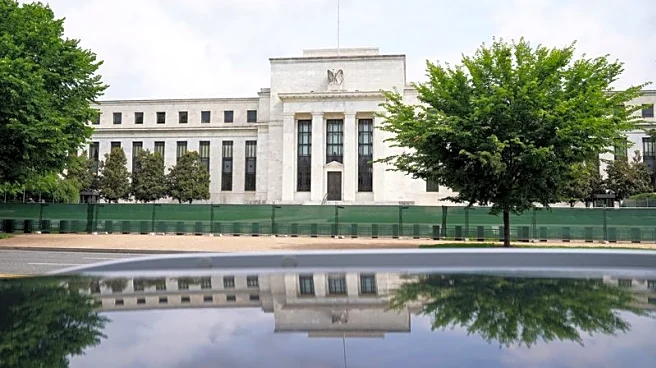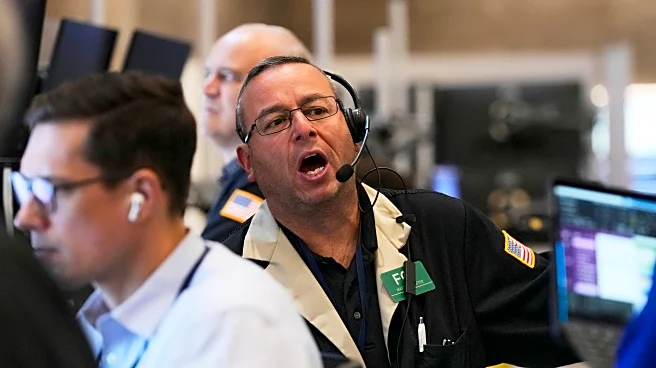What's Happening?
Wholesale inflation in the U.S. unexpectedly fell in August, leading to speculation that the Federal Reserve may cut interest rates at its upcoming meeting. The Producer Price Index (PPI) declined by 0.1% in August, contrary to expectations of a 0.3% rise. This decrease is attributed to businesses absorbing tariff costs to retain customers. Despite the drop, some imported goods showed tariff impacts, with tobacco and coffee prices increasing. President Trump has criticized Fed Chairman Jerome Powell, urging for a rate cut. Traders are now placing high odds on a rate cut at the Fed's meeting on September 17.
Why It's Important?
The unexpected drop in wholesale inflation could influence the Federal Reserve's monetary policy decisions, potentially leading to an interest rate cut. Such a move may stimulate economic activity by lowering borrowing costs for businesses and consumers. However, the absorption of tariff costs by businesses raises concerns about their ability to maintain this strategy long-term. A rate cut could also impact financial markets, affecting investment strategies and economic forecasts. The decision will be closely watched by economists and stakeholders, as it may signal the Fed's approach to managing inflation and economic growth.
What's Next?
The Federal Reserve is expected to make a decision on interest rates at its meeting on September 17. Economists and market analysts will be monitoring the Fed's actions and statements for indications of future monetary policy. Businesses may need to reassess pricing strategies if tariffs continue to impact costs. The outcome of the Fed's decision could influence market confidence and economic projections, with potential implications for consumer spending and investment.













